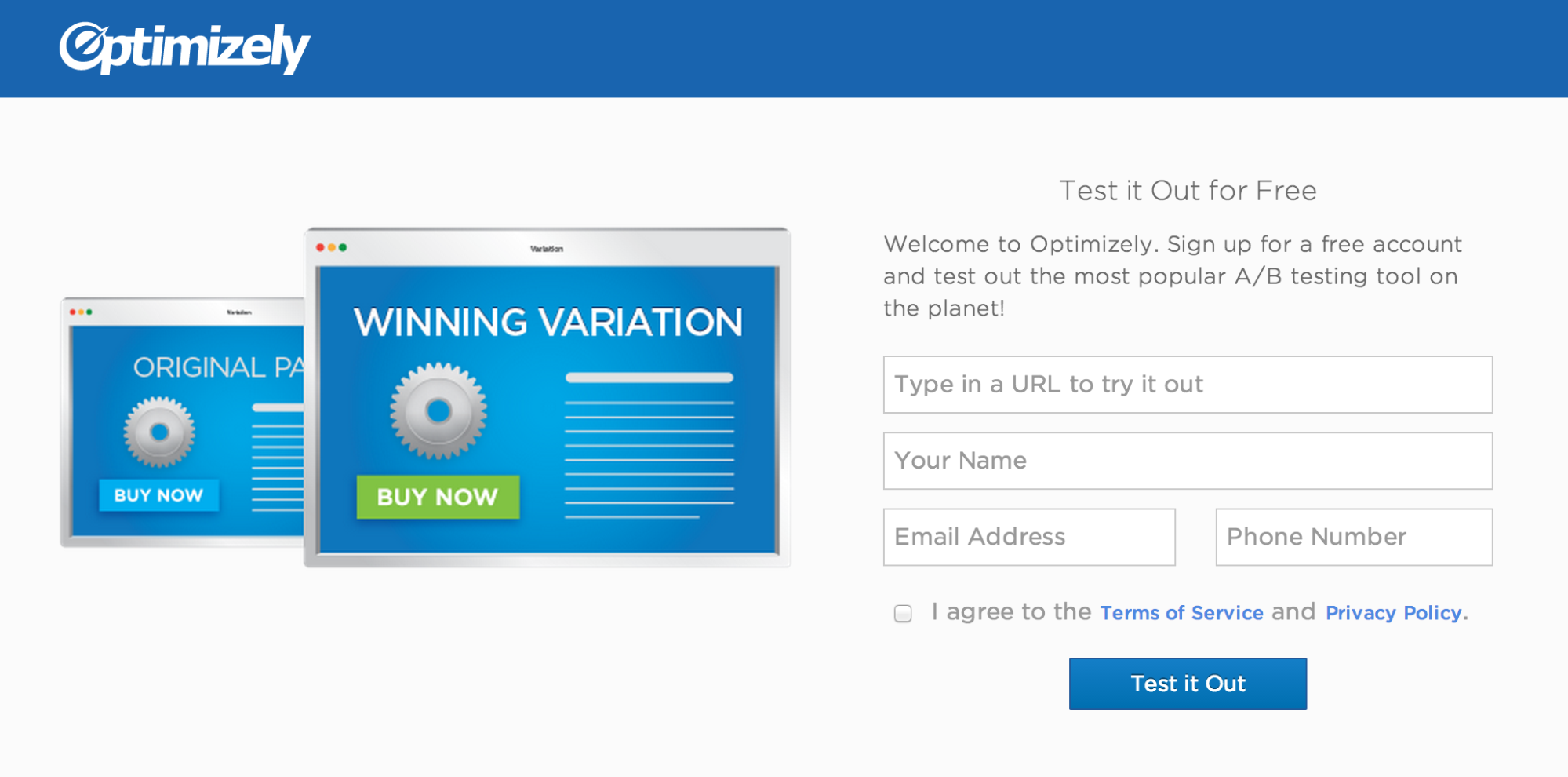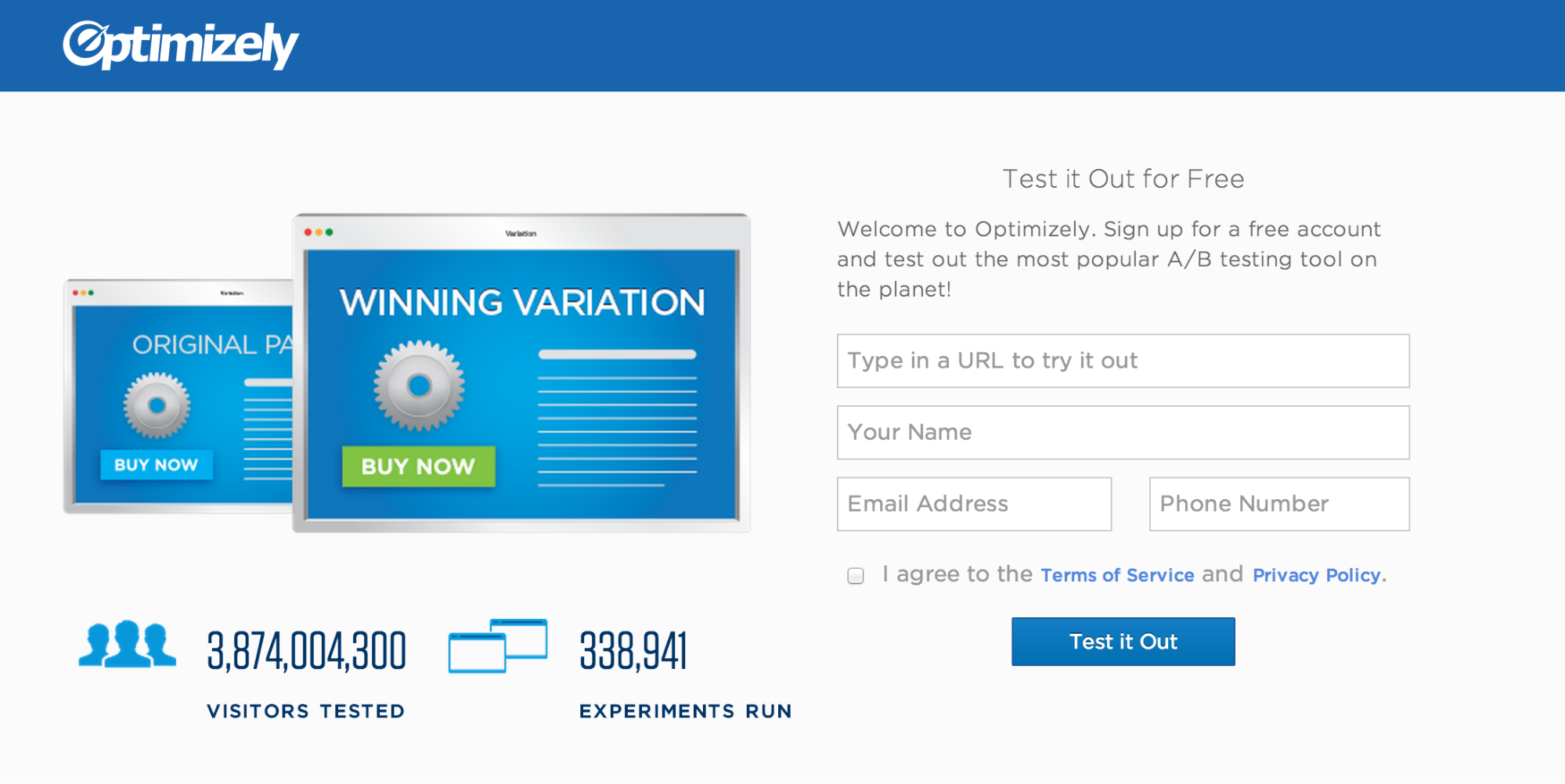Using Data for Social Proof
I recently ran a test on Optimizely’s free trial signup page that’s a great example of using social proof to increase conversions. I’ve written about social proof before, but the gist of the idea is that telling a person other people are already using your product or service makes them more likely to also use it. Knowing other people have already taken a particular action reduces perceived risk.
The free trial signup page is a search engine marketing page that people land on when coming from an ad. The page started out as a simple signup form with an image to illustrate split testing, whose primary goal is to get people to sign up for Optimizely. I created a variation that displayed the total number of visitors tested and experiments run with Optimizely, which are live counters that tick up in real time. I wanted to see if using data to demonstrate how many people are already using Optimizely was an effective form of social proof.

Original page with no social proof.

Variation with the total visitors tested and experiments run as social proof.
The test was a definitive win that resulted in an 8.7% lift in sign ups. The change itself was relatively simple (i.e. easy to design, easy to implement), but the test further proved the power of social proof.